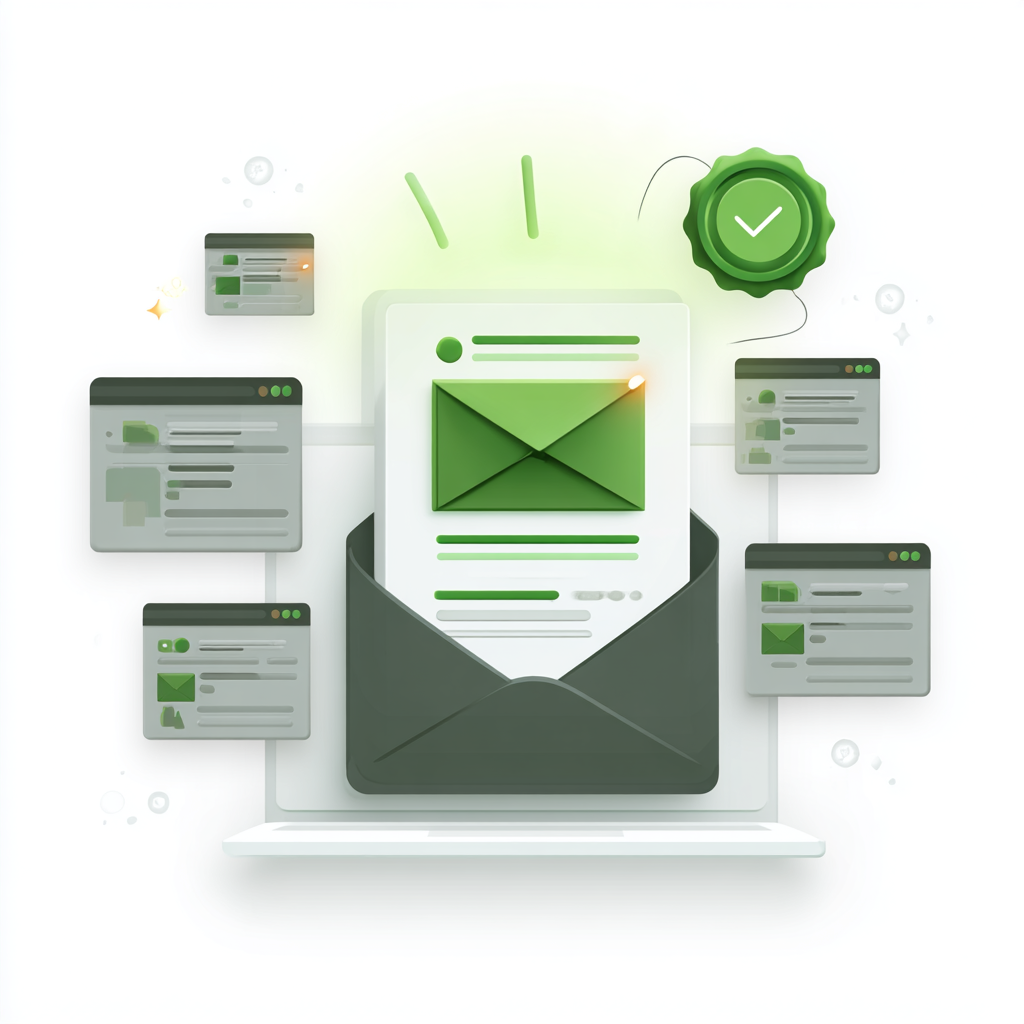Email marketing enables businesses to showcase their products, engage with their audience, and boost engagement. However, the true power of email campaigns lies in the quality and management of email marketing lists. By mastering the art of list management, your messages reach the right audience, reduce the risk of being marked as spam, and enhance overall campaign performance. This article is your best guide to mastering email marketing list management, equipping you with essential strategies for building, maintaining, and optimizing your subscriber base.
What is email marketing list management?
Email marketing list management involves the systematic process of maintaining and optimizing a list of email subscribers to enhance the effectiveness and efficiency of email marketing campaigns. It encompasses tasks to maintain a strong contact database. These tasks involve vetting email subscribers, categorizing them based on shared traits, monitoring their engagement with email content, and regularly fine-tuning the list.
An essential aspect of email list management is removing inactive subscribers, which often proves challenging for many marketers but is crucial to prevent stagnation. Email list management is a strategic approach to overseeing, structuring, and optimizing your subscriber base, ensuring ongoing engagement, efficiency, and vitality. Skillful management of your email subscriber list is paramount for a successful email marketing strategy, facilitating targeted communication, efficient segmentation, and a clean roster free from inactive contacts.
Why should you manage your email list?
Managing your email list effectively is vital for the success of your email marketing campaigns. A well-maintained and engaged subscriber base ensures your emails reach the right audience and foster meaningful engagement. In this regard, here are several key benefits of managing your email list:
- Effective engagement drives click-through rates, traffic, and sales while fostering stronger connections and improving overall campaign performance. You can nurture lasting relationships and enhance brand loyalty by prioritizing delivering relevant content to subscribers. Efficiently managing your email list leads to cost savings by targeting only engaged contacts, maximizing the return on your marketing investment. Maintaining a healthy and engaged subscriber list also allows for accurate measurement of email campaign performance, providing valuable insights for informed decision-making and optimization efforts.
- Interacting with active subscribers is key to fostering higher email engagement, which leads to many benefits for your email marketing campaigns. When subscribers actively engage with your emails, they are likelier to click on links, visit your website, and ultimately make purchases, driving increased traffic and sales. Moreover, consistent interaction with engaged subscribers fosters stronger relationships between your brand and audience.
This ongoing engagement increases the likelihood of continued interaction with your emails. It cultivates a sense of loyalty among subscribers as they recognize and appreciate your emails’ value. As a result, your campaigns are likely to see better performance metrics, including higher open rates, click-through rates, and conversion rates.
- Improving customer relationships through email marketing involves delivering relevant content to subscribers and enhancing their loyalty to your brand. Regular interaction with your emails strengthens the connection between you and your subscribers, fostering long-term relationships built on trust and mutual understanding. By consistently providing value through informative and engaging content, you retain existing customers and cultivate brand advocates more likely to recommend your products or services to others.
- Lowering email marketing costs is a crucial aspect of effective list management, as it helps businesses optimize their marketing budget and maximize return on investment (ROI). Businesses can reduce costs associated with email marketing platforms by implementing strategies to maintain a healthy and engaged subscriber list, such as regularly cleaning and segmenting the list. By only paying for engaged contacts who are actively interacting with their emails, businesses ensure that their marketing budget is allocated efficiently.
- Enjoying more accurate analytics is a significant benefit of maintaining a healthy and engaged subscriber list in email marketing. Having reliable data allows businesses to understand their audience’s preferences and behaviors, enabling them to make informed decisions when crafting future marketing strategies. This data-driven decision-making process enhances email marketing efforts’ effectiveness and helps businesses stay competitive.
12 Best practices for managing email marketing list
A well-maintained list ensures that your emails reach the right audience, fostering higher engagement, better deliverability, and stronger customer relationships. Here are some best practices for managing email marketing lists to maximize marketing efforts and drive business growth.
1. Build your list organically
Focus on attracting subscribers through genuine interest rather than purchasing email lists. Organic methods include offering valuable content, running promotions, or using lead magnets like eBooks and webinars. Purchased lists typically result in low engagement and high unsubscribe rates, harming your sender’s reputation and raising the likelihood of your emails being flagged as spam.
2. Implement double opt-in
Utilize a double opt-in process where subscribers must confirm their email by clicking a link sent to their inbox. This method ensures that the email addresses are valid and that the subscribers genuinely want to receive your emails. It lowers the risk of spam complaints and improves the quality of your email list, leading to better engagement rates.
3. Regularly clean your list
Periodically review your email list to remove inactive or invalid email addresses. Inactive subscribers can negatively impact your engagement metrics and deliverability rates. Tools and services that identify and remove hard bounces, unsubscribes, and non-engaged users help maintain a high-quality list, ensuring your emails are sent to an active and interested audience.
4. Segment your list
Segment your email list according to demographics, behavior, purchase history, or preferences. This enables you to customize your content for various groups, making your emails more relevant and engaging. For instance, you can send tailored emails to new subscribers, loyal customers, or those interested in specific products or services. Segmentation leads to higher open and click-through rates and, ultimately, better conversion rates.
5. Personalize your emails
Personalization goes beyond addressing subscribers by their first name. Use your data to customize email content based on past interactions, preferences, and behaviors. For instance, recommend products based on previous purchases or send birthday offers. Personalization improves the relevance and attractiveness of your emails, boosting the chances of favorable responses from your subscribers.
6. Use clear and compelling sign-up forms
Design sign-up forms that are user-friendly and highlight the benefits of subscribing. Use strong calls to action and ensure that forms are easily accessible on your website, blog, social media pages, and other marketing channels. Providing incentives, such as discounts or exclusive content, can also increase the number of sign-ups.
7. Provide value with every email
Ensure your email delivers value to your subscribers through helpful information, exclusive offers, or engaging content. Valuable emails keep subscribers interested and looking forward to your messages, which helps build a loyal subscriber base. Regularly ask for feedback to understand what your audience finds valuable and tailor your content accordingly.
8. Monitor and manage bounce rates
Monitor both hard and soft bounces closely. Hard bounces happen when an invalid email address is removed from your list. Soft bounces are temporary problems like a full inbox and should be monitored; if they persist, consider eliminating those addresses. Managing bounces ensures your list remains healthy and your deliverability rates remain high.
9. Offer easy opt-out options
Make it straightforward for subscribers to unsubscribe if they no longer wish to receive your emails. An easy opt-out process helps maintain a positive relationship with your audience and ensures compliance with legal regulations. Ensure that an unsubscribe link is included in each email, and consider offering options for subscribers to adjust their email preferences rather than entirely unsubscribe.
10. Engage inactive subscribers
Develop re-engagement campaigns targeted at subscribers who last interacted with your emails. Provide special incentives, like discounts or exclusive content, to encourage them to return. You can also ask for feedback on why they stopped engaging and tweak your strategies accordingly. Re-engagement efforts can revive interest and reduce the number of inactive subscribers.
11. Comply with legal requirements
Ensure your email marketing follows GDPR, CAN-SPAM, and other applicable laws. Obtain explicit consent from subscribers before sending emails, provide clear privacy policies, and make it easy for subscribers to withdraw their consent. Compliance not only avoids legal penalties but also builds trust with your audience.
12. Regularly analyze and optimize
Continuously monitor key email performance metrics, such as open rates, click-through rates, and conversion rates. Use this data to gain insights into what works and what does not. Conduct A/B testing to compare different subject lines, content, and designs. Consistently reviewing and improving your email campaigns is vital for improving your strategies and increasing their effectiveness as time progresses.
Conclusion
Effectively managing your email list is crucial for successful email campaigns. Ensuring your list is tidy and adequately sorted is important for getting your emails to the right people and keeping them out of spam folders. Maintaining a healthy list also fosters stronger customer relationships and supports business growth. Remember to comply with regulations and regularly monitor your email performance to optimize your campaigns over time.





